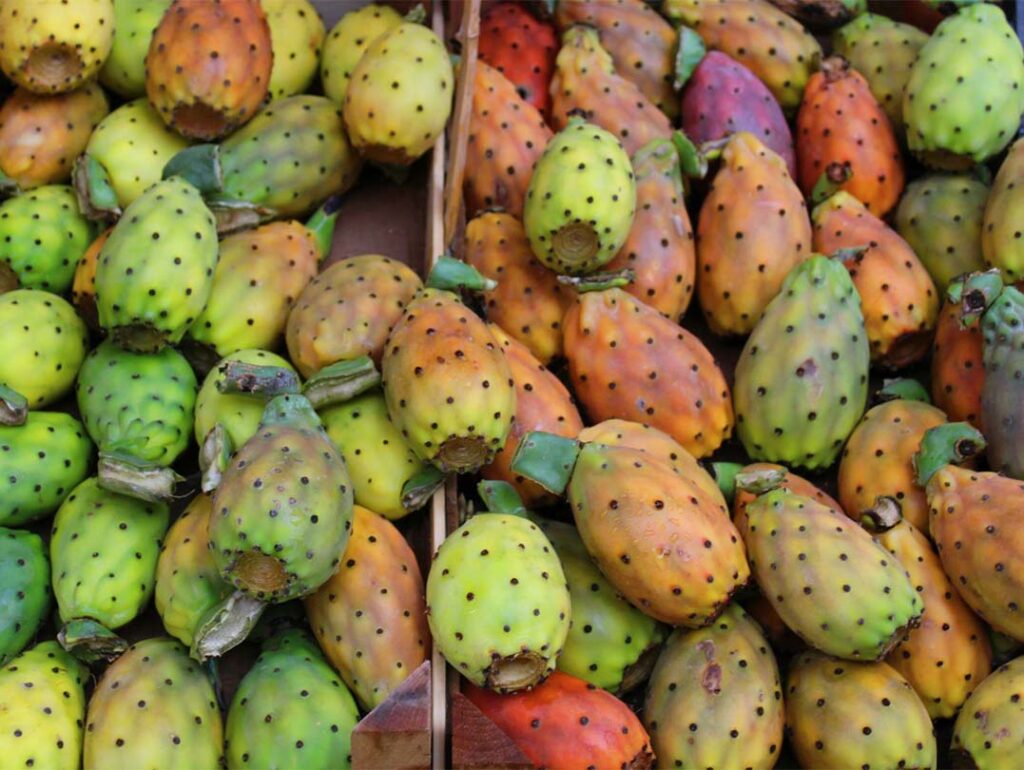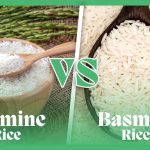A delightful excursion into the realm of the prickly wonder, Opuntiaficus-indica, or nopal cactus, is about to begin. Get ready!
This hardy plant, which comes from the dry parts of the Americas, has grown more popular than its piquant exterior suggests in a variety of international dishes. Nopal cactus is becoming more and more well-known for its incredible nutritional value in addition to its unique flavor. To explore how this unusual and nutrient-dense food source might support a healthy lifestyle, we’ll peel back the layers and reveal its rich tapestry of vitamins, antioxidants, and fiber.
Join us to learn the delicious tips and health advantages that make the nopal cactus a unique complement to every meal!

Nutritional composition:
Opuntiaficus-indica, often known as the nopal cactus, is a remarkably nutritious plant that also tantalizes the taste buds with its distinct flavor. With 3.6g of nutritional fiber, 1.5g of protein, and 9g of carbs per 100g, this hardy plant has an amazing macronutrient profile.
Regarding micronutrients, it provides 20 mg of vitamin C, 50 IU of vitamin A, and a combination of B vitamins, which includes 5 mcg of B9 and 0.1 mg of B6. With 56 mg of calcium, 85 mg of magnesium, 0.9 mg of iron, and a whopping 220 mg of potassium per 100g, the cactus also helps with mineral intake. For these reasons, it’s a nutritional powerhouse that should be a part of any well-rounded diet.
| Nutrient | Amount per 100 g |
|---|---|
| Calories | 16 |
| Macronutrients | |
| Carbohydrates | 9 g |
| Protein | 1.5 g |
| Dietary Fiber | 3.6 g |
| Micronutrients | |
| Vitamins | |
| Vitamin C | 20 mg |
| Vitamin A | 50 IU |
| Vitamin B6 | 0.1 mg |
| Vitamin B9 | 5 mcg |
| Minerals | |
| Calcium | 56 mg |
| Magnesium | 85 mg |
| Iron | 0.9 mg |
| Potassium | 220 mg |
Role in Human Nutrition:
Nopal cactus offers tons of health benefits to the human body. Some of the prominent ones are discussed ahead:
Reduces the risk of chronic diseases:
Antioxidants are essential in the fight against oxidative stress because they may neutralize dangerous free radicals, shield cells from damage, and lower the chance of developing chronic illnesses. (1) Flavonoids, betalains, and ascorbic acid are just a few of the powerful antioxidants found in Nopal cacti. Research indicates that cacti can provide a substantial contribution to antioxidant consumption, which may strengthen the body’s resistance to oxidative damage. (2)
Regulate blood sugar levels:
According to research, eating cacti may lower blood glucose levels; nopal cactus may have anti-diabetic properties, which makes it a practicable dietary supplement for people with diabetes. (3) Studies indicate potential advantages of cactus for people with diabetes that it can enhance insulin sensitivity and help with glycemic management. These results highlight the cactus’ medicinal potential for managing diabetes.
Helps in weight management:
Research has connected the Nopal cactus’ high dietary fiber content to enhanced satiety, which may help with weight management. Fiber helps make one feel full, which may lead to a decrease in total calorie consumption. (4) Studies have shown that Nopal cactus has a low-calorie density, which makes it a great complement to a diet that focuses on weight loss. Its decreased calorie count and high nutritional richness make it a good choice for anyone looking for weight control options. (5)
Good for digestive health:
The high dietary fiber content of nopal cacti promotes regularity in the digestive system, which benefits digestive health. Research emphasizes how important dietary fiber is for preserving gut health. (6) Emerging study points to possible prebiotic benefits of cacti on gut health, specifically about Nopal cacti. These outcomes could encourage the development of advantageous gut flora, improving digestive health even further. (7)
Adverse effects:
Although cactus is frequently commended for its nutritious content and its health benefits, there are some disadvantages to cactus consumption.
Abdominal discomfort, nausea and vomiting:
The potential for negative effects on the gastrointestinal tract is one major worry. There is a possible risk associated with cactus eating since some people report experiencing nausea and vomiting after consuming it.
Additionally, it is important to consider the effect on the sensitivity of the digestive system, as some individuals may discover that cactus aggravates pre-existing gastrointestinal distress or causes pain in those with sensitive digestive systems. These negative effects highlight how important it is to include cacti in moderation and respect individual diversity when doing so since what works well for some people may cause digestive issues for others.
Allergic Reactions:
Some people may have adverse responses while eating cacti; therefore, it’s crucial to be aware of any potentially allergenic ingredients. Different people have different symptoms from allergies, and their intensity might vary as well. Itching, redness, or swelling of the skin are common signs of cactus allergies.
In more severe cases, people may also have trouble breathing or feel swelling of the face and neck. Effective management of allergic responses depends on identifying these allergenic chemicals and identifying the symptoms as soon as possible.
Interaction with medications:
It is advisable to consider the interaction of cacti with drugs while considering its consumption. You see, there’s a chance that cacti and your medications will interact sometimes.
Unsuitable for compromised kidney health:
Every variety of cacti has a different amount of oxalate, so for people with renal problems, it’s like watching the amount of spice in your favorite recipe. Some people may not enjoy too strong of a taste. Oxalate consumption should be taken into consideration by those who have kidney problems since excessive amounts may hurt renal function. Moderation is crucial, just as when striking the perfect balance in a dish. To maintain a healthy balance, it might be wise for individuals who are caring for their kidney garden to be aware of cactus oxalates while selecting ingredients.
Handling and preparation:
Giving cacti a thorough wash before handling and cooking is essential for a safe culinary experience. Thorough cleaning guarantees that all impurities and grime are removed, which lowers the possibility of unpleasant surprises in your meal. Imagine it as a cool shower for your cactus before it joins the culinary party.
A cactus’s spines may be sharp, to put it literally! Reducing skin contact is a smart strategy to prevent unanticipated pricks and stings. Your culinary knights in shining armor can be a pair of cooking gloves, providing defense from those small yet deadly spines. Thus, for a more efficient and secure preparation procedure, always remember to clean up after yourself and protect your hands when working with cacti!
Culinary Uses of Cactus:
Traditional dishes in which cactus is commonly used:
Cactus-based traditional recipes transport us back in time and help us connect with our culinary heritage. Cacti are a great addition to tacos, stews, and salads since they give well-known tastes a fresh spin. Cactus lovers will adore these classic recipes, which are a tasty tribute to the past.
Creative ways to incorporate cacti into modern recipes:
Let’s now discuss using creativity in the kitchen!
Cacti blend in effortlessly with contemporary cuisine, much like a culinary chameleon. For a fun breakfast idea, try adding chopped cactus to your omelet or making a cool cactus smoothie. There are countless options available, so explore and create your delectable dishes flavored with cacti!
Cooking tips and techniques for preparing cacti for consumption:
Cactus cooking is an art form, and with a few tips, it may become a gourmet masterpiece. First, clean it well; nobody likes to bite into sandy skin. Like a kitchen superhero, carefully remove the spines while keeping your hands safe. Cacti enjoy absorbing flavors, so season generously whether you’re grilling, sautéing, or simmering. These pointers can help you transform cacti into a mouthwatering meal that will wow everyone!
Conclusively, investigating the nutritional worth of cacti uncovers a multitude of health advantages, including its remarkable assortment of micronutrients and its favorable effects on antioxidant levels, blood sugar regulation, weight control, and digestive wellness.
When we explore the culinary uses of this adaptable plant, it becomes evident that adding cactus to our meals enhances the flavor and nutritional value of both traditional and modern cuisine. As you enjoy the distinct flavor, it’s important to consider any allergies and ensure that everything is prepared correctly. Accepting the many benefits of eating cacti may be a small but meaningful step in the direction of a healthy way of living since they offer not only delicious food but also nutrients for general health.
References:
- https://doi.org/10.3390/antiox2020037
- https://doi.org/10.3390/molecules190914879
- https://doi.org/10.2337/diacare.11.1.63
- https://doi.org/10.1016/j.jand.2014.06.352
- https://doi.org/1874-2882 ― Volume 15, 2021
- https://doi.org/10.1016/j.foodchem.2007.08.062
- https://doi.org/10.1016/s0168-1605(00)00428-1









